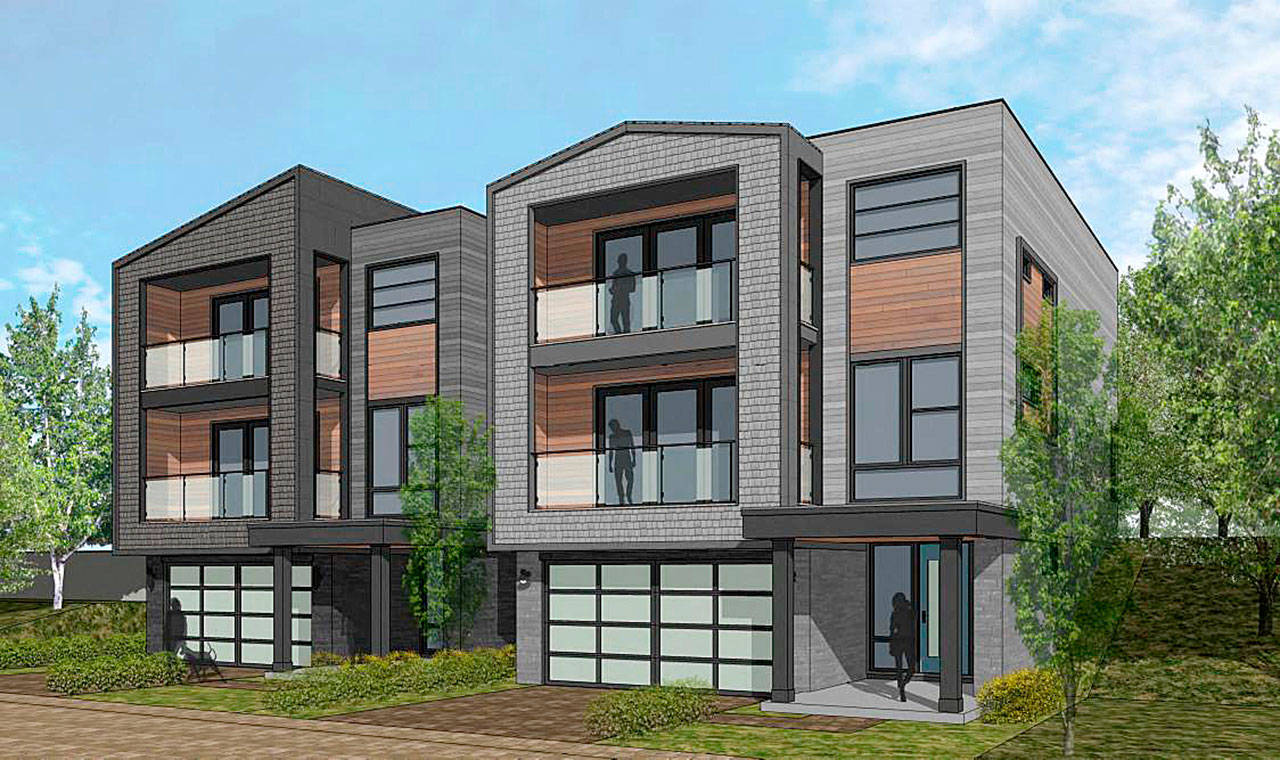Wright’s Crossing has a new proposed development aimed at tackling the housing crisis — this time, with fewer regulatory hurdles in its path than its previous endeavor.
And ideally, with less controversy, said Scott Thompson, principal investor in Wright’s Crossing, LLC.
“This is a pretty simple project,” Thompson said.
THOMPSON IS proposing approximately 160 single-family units for a master-plan community on the hillside across the street from Safeway in Oak Harbor. The units will vary in size and price, and Thompson said he plans to reserve 10 percent of the lots for Habitat for Humanity of Island County.
Within the community there are plans for a neighborhood park as well as a dog park.
He’s aiming to break ground this August.
During the public comment period, most of the negative input centered around the traffic the development will cause, he said. The state Department of Transportation has in its long range plans the eventual installation of a roundabout at the intersection of State Highway 20 and Erie Street, which Thompson thinks will address many of the traffic concerns.
The project is still in the city’s permitting process, but Thompson said he doesn’t anticipate any snags.
HE IS quite familiar with snags. In September 2017, Wright’s Crossing proposed a large-scale development south of the city that required density changes and county action to expand Oak Harbor’s urban growth area.
Island County commissioners decided the expansion wasn’t justified under the state Growth Management Act, which led to appeals in two courts and a quasi-judicial board.
The Western Washing-ton Growth Management Hearings Board and judges from Skagit County Superior Court and Thurston County Superior Court dismissed the developer’s appeals.
Thompson said his objective with both projects is to fill a need for more affordable housing in Island County.
“I came here because this is where I grew up, and I’m a little disappointed that no one has maintained enough housing for young families,” he said.
The homes in the current project likely won’t come out at a price point as low as he knows is needed, Thompson acknowledged.
He said the project won’t be easy because it will include building on relatively steep hillside terrain.
He maintains there isn’t enough land in the city that’s affordable to build on, but the developer decided “to do the only project that’s feasible.”
TO KEEP at least some of the units affordable, there will probably be between eight and 16 lots for houses to be built by Habitat for Humanity, which serves households making between 30 and 80 percent of the area median income, according to Orin Kolatis, chief operating office for Habitat.
Kolatis said ready-to-build lots are rare and make a significant difference in keeping costs reasonable.
“Without land that’s donated to us, it’s almost impossible for us to do any kind of (affordable) development,” he said.
The rest of the houses will be incrementally larger, Thompson said, with a median price around $375,000. The larger homes will cost around $500,000, he said.
MANY OF the proposed units will be single story and designed for seniors who are looking to downsize, he said. The homes are styled “Pacific Northwest modern living,” although the designs haven’t been finalized yet.
Thompson maintains that there isn’t enough buildable land within the city limits, which goes against the findings of the most recent buildable lands analysis. He said to develop enough affordable housing, more density needs to be allowed outside the current boundaries.
“This is just an interim project,” he said of the hillside development, “to keep the city going so they can see some growth.”



